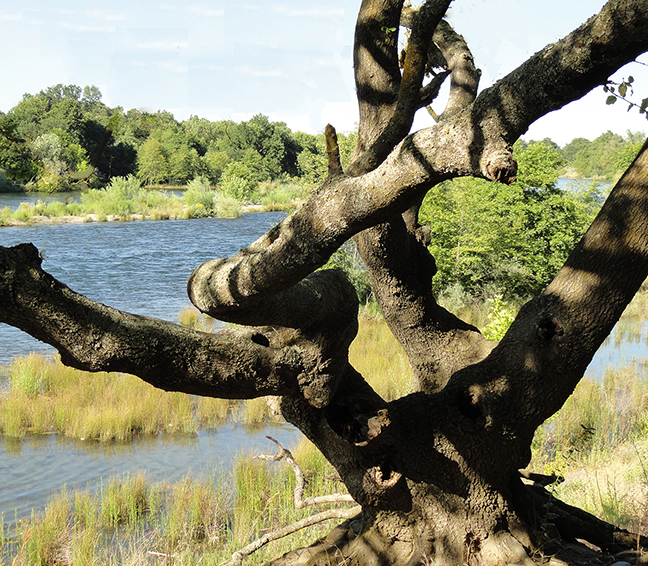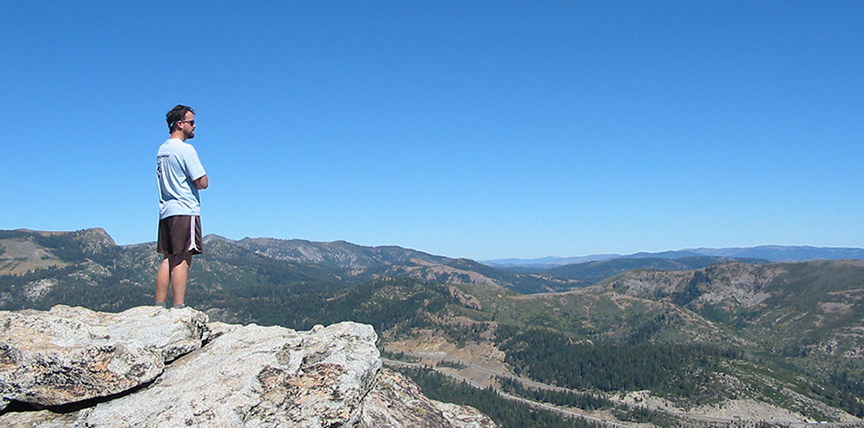
Chapter from Meditator’s Field Guide copyright 2017, Doug Kraft.
Each day is a journey, and the journey itself, home.
Many years ago my wife and I bought a home near the American River in northern California. I love to walk through the fields and woodlands along the river or to sit by the rushing water. The region is populated with herons, white-tailed kites, hawks, vultures, turkeys, cranes, rabbits, deer, coyotes, otters, rattlesnakes, salmon, pine trees, purple thistles, sycamores, oaks, lupine, and thousands of other species of flora and fauna. I know a little about some of them and less about others.

A friend gave me a field guide to wildlife in the area. The guide doesn’t tell me where to find the paths, meadows, groves of trees, or coves along the river. That’s the job of a map. The field guide doesn’t instruct me on how to hike or what to bring or leave behind. It assumes I know enough to get around. Instead, it focuses on the wildlife itself: how to identify creatures and plants, what they do, what’s important to them, and how understanding them is “a key to unlock the gates to greater understanding of the world around us.”[Note 1]
I wrote this Meditator’s Field Guide in a similar spirit. However, rather than focus on the world around us, it focuses on the world within us — the inner landscape revealed by spiritual practice, particularly meditation. Like other field guides, it doesn’t provide a detailed map or beginning instructions. I intend it to be a companion for “hikers” already on a spiritual trail. I imagine you have a few miles behind you already. My earlier books, Buddha’s Map, and Beginning the Journey, offer an extensive map and detailed instructions should you need them.

However the path we imagine in the beginning is never quite the one we discover along the way. Once we have some familiarity with the landscape, it becomes possible, perhaps essential, to reflect on the insights and experiences that arise during our journey.
Each of us is unique with different temperaments, aspirations, concerns, inclinations, and history. Each of our journeys are unique, so I assembled this field guide in a way that is easy to jump around to diverse topics in whatever sequence works best for you. Though all the chapters are interconnected, each is written to stand on its own. For your convenience some chapters repeat key points. Similar to most field guides, this one doesn’t have to be read linearly from front to back.
Every part of meditation is directly or distantly related to every other part. Each reflection is connected to all the others; that is how Buddhism works. You can start anywhere and read in any direction. Better yet, you can look for the topics most relevant to your life and practice and start there. At the end of each chapter you’ll find references to other closely related chapters.
You’ll find references throughout this book to a process called “The Six Rs.” Let me introduce you to them now.
A wide variety of meditation styles are practiced today. Most are helpful to some people at various times. The Buddha himself taught several different methods. In recent years I’ve favored a combination of kindness and wisdom practices that the Buddha described in the earliest records of his talks. You’ll find mention of this combined practice throughout the field guide, though most of the reflections are helpful for many styles of meditation.
Every meditation practice I have tried or heard about has one element in common: hindrances to the practice. It’s safe to say that all meditators stumble over distractions. How we handle them is essential. The Buddha recommended Wise Effort (samma vayama ). Effort is easy. Wisdom is not always easy.
The most effective approach to Wise Effort that I’ve found is a six-phase process I learned from one of my teachers, Bhante Vimalaramsi. It’s so familiar that we fondly call it “The Six Rs.” It works like this. When you realize that your awareness has been taken over by a distraction, you:
• Recognize that your attention has been drawn away,
• Release the distraction by just letting it be as it is,
• Relax any tension,
• Re-Smile or bring in uplifted qualities such as kindness, compassion, joy, or peace,
• Return to the primary object of mediation, and
• Repeat the process as often as needed.
The Six Rs can be useful with a wide variety of mediation practices. I include a description in Appendix A so that you can have it at your fingertips.
It is my hope that this field guide to meditation will help you find depth, ease, wisdom, and kindness in meditation and in life.
May your vision be clear, your footing steady, and the journey itself your home.

Note:
1. The Outdoor World of the Sacramento Region, complied and edited by Jo Smith, et al. (The American River Natural History Association, 1993.). p. 1.
Copyright 2017 by Doug Kraft
This document is licensed under a Creative Commons Attribution-NonCommercial 4.0 International License. You are welcome to use all or part of it for non-commercial purposes as long as you credit the author. Specific licensing details are here.
How to cite this document
(a suggested style): "How to Use This Field Guide" by Doug Kraft, www.dougkraft.com/?p=HowToUse.